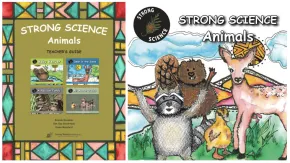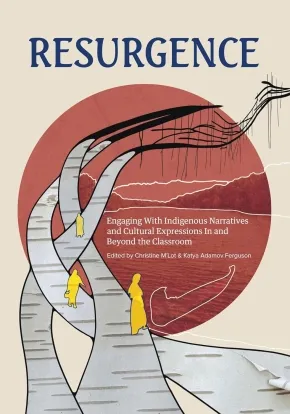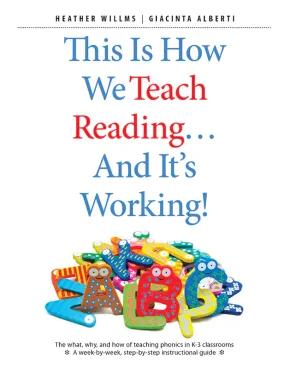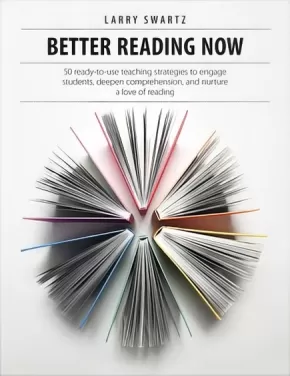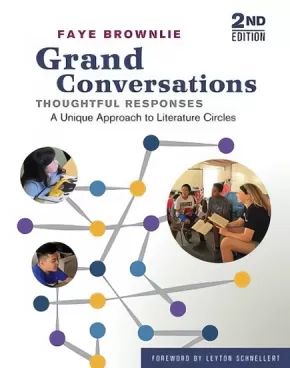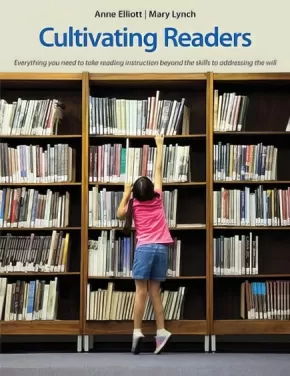
Reading Resources
1
-
15
of
23 Results;
Sort By
Go To
of 2
Renewal: Indigenous Perspectives on Land-Based Education In and Beyond the Classroom
$37.00
Artists:
Format:
Paperback
Text Content Territories:
Indigenous Canadian;
ISBN / Barcode: 9781774921678
Synopsis:
Synopsis:
A guide that provides ideas and action steps for bringing Indigenous perspectives and philosophies of land-based learning into professional practice, in the classroom and beyond.
Renewal, the second book in the Footbridge series, guides K–12 educators in bringing Indigenous voices and the philosophy, principles, and practices of Indigenous land-based education into their teaching. This text encourages educators to:
- respectfully renew their own relationships with land directly engage students with the land, no matter where they are located
- guide students in learning through observation, listening, and discussion and to take action in response
- honour diverse ways of knowing and being
- understand historic injustices and engage with the contemporary Land Back movement
Through critical engagement with diverse written and visual works created by Indigenous leaders, land defenders, scholars, and Knowledge Keepers, experienced educators Christine M'Lot and Katya Adamov Ferguson support readers in connecting with Indigenous perspectives on land and water. They offer guidance on bringing Indigenous works into the classroom, including concrete ways to facilitate discussions around land-based topics, advice for land-based activities, and suggestions for how students can engage with these topics through inquiry learning.
In this resource, you will find:
- prompts for individual reflection and group discussion
- valuable concepts and methods that can be applied in the classroom and beyond
- practical action steps and resources for educators, parents, librarians, and administrators
Use this book as a springboard for your own learning journey or as a lively prompt for dialogue within your professional learning community.
Reviews
"Renewal lays out a simple and practical approach to land-based education. It works from the premise that land-based education is not simply “taking the classroom outside,” but is about "education on the land, about the land, and from the land.” The spiritual foundation of earth-based cultures is about living in your place as one small, equal part of the land (land being the entirety of air, earth, water, living beings, and spirits), a foundation common to most Indigenous cultures on this planet. I hope that others adopt it in their journey to become more holistic educators and maybe even make a positive difference in shaping how we humans interact with the land." — Dr. Garry Merkel, Director, Centre of Indigenous Land Stewardship, The University of British Columbia
Educator & Series Information
For use with grades K to 12.
This book is part of The Footbridge Series. This series aims to bridge curricular outcomes with Indigenous-centered content and perspectives from across Turtle Island. Like a footbridge, this series is intended to provide a path between Indigenous worldviews and the classroom, engaging differences, including tensions, and highlighting the importance of balance, all while helping teachers integrate Indigenous perspectives into multiple disciplines within the K-12 education system.
Contributions by Nicki Ferland, Peatr Thomas, Tyna Legault Taylor, Shannon Webb-Campbell, Tasha Beeds, Sonny Assu, Shalan Joudry, Tricia Logan, Dakota Bear, Shirli Ewanchuk, Dan Henhawk, Réal Carrière, Hetxw'ms Gyetxw Brett D. Huson, Reanna McKay (Merasty)
Photographs by Inuksaq Angotingoar, Makayla Aupaluktuq, Brendan Kingilik, Carina Kingilik, Kyle Lareau, Quin Mikkungwak, Narkyagik, Kaylee Rumbolt, Marissa Scottie, Nathan Snow, Connor Tagoona-Niego, Koen Tapatai, and Shelly Tunguaq
Additional Information
224 pages | 7.00" x 10.00" | Paperback
Bridging the Reading Gap: Explicit instruction that supports spelling, phonics, morphology, and vocabulary development in grades 4-8
$32.95
Format:
Paperback
ISBN / Barcode: 9781551383675
Synopsis:
Synopsis:
A structured series of ready-to-use lessons that explore the “how” and the “why” of the English language with students. The engaging activities reflect the needs of all students, covering a wide range of abilities. Carefully curated word lists scaffold instruction for emergent to competent readers. The lessons are based on extensive classroom experience and include suggestions from teachers who have used the lessons in real classrooms. An ideal resource for using the spelling block to instruct, strengthen, and address gaps in phonics, morphology, and vocabulary knowledge for students in grades 4-8.
Educator Information
For use with students in grades 4 to 8.
Additional Information
160 pages | 8.37" x 10.87" | index, bibliography | Paperback
Active Reading Classrooms: Strategies that Build Language Comprehension and Word Recognition Skills
$32.95
Format:
Paperback
Grade Levels: Kindergarten; 1;
ISBN / Barcode: 9781551383651
Synopsis:
Synopsis:
This practical book invites teachers to investigate different strategies to teach both whole-class and individual intervention lessons in reading. The book strives to take students beyond the simple view of reading and make them active users of language who make connections among the elements that science tells us are part of the reading process. Teachers will find strategies focused on self-regulation, word recognition, and language comprehension, along with various ways to connect and strengthen each aspect of reading. The lessons address new research about the complexities of reading and focus on scaffolding and differentiating learning for students in elementary classrooms.
Additional Information
144 pages | 8.38" x 10.38" | Paperback
Strong Science - Animals Teacher's Guide
 $30.00
$30.00

Artists:
Format:
Coil Bound
Text Content Territories:
Indigenous Canadian; First Nations; Sioux; Lakota; Hunkpapa;
Grade Levels: 1;
ISBN / Barcode: 9781771746274
Synopsis:
Synopsis:
This teacher’s guide supports a language-based Science unit for early primary classrooms, using the sixteen titles in Strong Nations Publishing’s Strong Science - Animals series.
The unit introduces early primary students to four easily recognizable animals that live in or near many communities in Canada: beaver, black-tailed deer, mallard duck, and raccoon. While learning about the animals, students will gain knowledge and skills mandated by Ministry of Education Science curricula in Canadian provinces and territories.
In addition, this teacher’s guide addresses other curriculum areas— Language Arts, Math, Social Studies, and Art—and provides information to help develop an appreciation for and understanding of Indigenous cultures.
This teacher-friendly, comprehensive teacher’s guide provides:
• lesson plans to introduce the books in the Strong Science - Animals series;
• lesson plans to address knowledge and skills common to Canadian Science curricula;
• activities to integrate the unit across the curriculum;
• activities to wrap up the unit;
• reproducible activity pages.
Educator Information
The Strong Science - Animals series and teacher's guide is recommended for use with grade one students, but it may also be useful in kindergarten classes.
Additional Information
170 Pages | 8.5" x 11" | Coil Bound
Teacher Resource Bundle: Strong Science - Animals
 $135.00 $150.00
$135.00 $150.00

Text Content Territories:
Indigenous Canadian; First Nations; Sioux; Lakota; Hunkpapa;
Grade Levels: Kindergarten; 1;
ISBN / Barcode: 9781771746663
Synopsis:
Synopsis:
This bundle includes one copy of each of the 16 Strong Science - Animals titles and the accompanying Strong Science: Animals - Teacher's Guide.
About the Strong Science - Animals Series
Strong Science - Animals is a language-based science series for primary students featuring animals that all Canadian students will recognize. Photographs and Indigenous artwork illustrate the series. Common learning objectives in science curricula across Canada are addressed, and suggestions for extending the learning to other curriculum areas, including Indigenous cultural awareness, language arts, math, and art, are included in the teacher’s guide. The sixteen books in this series are grouped into four levels that increase in complexity, designed to accommodate students with various reading abilities within a classroom. This feature facilitates the use of this series in literacy programs along with the Strong Readers series.
Books in this series are divided into four levels: Early Primary 1 (EP1); Early Primary 2 (EP2); Early Primary 3 (EP3); Early Primary 4 (EP4). Font size decreases as language complexity and word count increase across levels: EP1 books have approximately 40 words, EP2 books have approximately 60 words, EP3 books have approximately 80 words, and EP4 books have approximately 100 words.
Each book is 16 pages, 6.5" x 5.5", and paperback
About the Strong Science - Animals: Teacher's Guide
This teacher’s guide supports a language-based Science unit for early primary classrooms, using the sixteen titles in Strong Nations Publishing’s Strong Science - Animals series.
The unit introduces early primary students to four easily recognizable animals that live in or near many communities in Canada: beaver, black-tailed deer, mallard duck, and raccoon. While learning about the animals, students will gain knowledge and skills mandated by Ministry of Education Science curricula in Canadian provinces and territories.
In addition, this teacher’s guide addresses other curriculum areas— Language Arts, Math, Social Studies, and Art—and provides information to help develop an appreciation for and understanding of Indigenous cultures.
This teacher-friendly, comprehensive teacher’s guide provides:
• lesson plans to introduce the books in the Strong Science - Animals series;
• lesson plans to address knowledge and skills common to Canadian Science curricula;
• activities to integrate the unit across the curriculum;
• activities to wrap up the unit
The teacher's guide is 170 Pages, 8.5" x 11", and coil bound
Additional Information
Teacher Resource Bundle ISBN: 9781771746663
Resurgence: Engaging With Indigenous Narratives and Cultural Expressions In and Beyond the Classroom
$32.00
Editors:
Format:
Paperback
Text Content Territories:
Indigenous Canadian;
ISBN / Barcode: 9781774920008
Synopsis:
Synopsis:
A thoughtful guide to critical engagement with Indigenous literatures, perspectives, and teaching methods as well as ideas and action steps for bringing them into the classroom.
Resurgence is an inspiring collection of contemporary Indigenous poetry, art, and narratives that guides teachers in bridging existing K–12 curricula with Indigenous voices and pedagogies. Walk with us along the footbridge which seeks to:
- connect peoples and places
- link truth and reconciliation as ongoing processes
- symbolize the risk and urgency of this work for both Indigenous and settler educators
- engage tensions
- highlight the importance of balance, both of ideas and within ourselves
Through critical engagement with the texts, experienced educators Christine M’Lot and Katya Adamov Ferguson support readers in connecting with Indigenous narratives and perspectives, bringing Indigenous works in their classrooms, and creating more equitable and sustainable teaching practices.
In this resource, you will find
- diverse Indigenous voices, perspectives, and art forms from all across Turtle Island
- valuable concepts and methods that can be applied to the classroom and beyond
- practical action steps and resources for educators, parents, librarians, and administrators
Use this book as a springboard for your own learning journey or as a lively prompt for dialogue within your professional learning community.
Reviews
"Over the past several years, calls have come from across Canada for the inclusion of Indigenous worldviews and knowledge in all levels of education in the country. Enter...Resurgence." ––Windspeaker
Educator & Series Information
For use with K-12 curricula.
Contributors include KC Adams, Charlene Bearhead, Wilson Bearhead, Lisa Boivin, Nicola Campbell, Sara Florence Davidson, David A. Robertson, and Christina Lavalley Ruddy, and more!
Subjects / Themes: Education; Professional Development; Social Science; Indigenous Studies; Language Arts Disciplines; Study Teaching
This book is part of The Footbridge Series. This series aims to bridge curricular outcomes with Indigenous-centered content and perspectives from across Turtle Island. Like a footbridge, this series is intended to provide a path between Indigenous worldviews and the classroom, engaging differences, including tensions, and highlighting the importance of balance, all while helping teachers integrate Indigenous perspectives into multiple disciplines within the K-12 education system.
Table of Contents
Introduction
About This Book
About The Footbridge Series
Part 1: Resistance
Beyond Being Silenced by Sara Florence Davidson
- Connections
Poetry as Cultural Expression by Rita Bouvier
- Connections
T’seka Reflection by Lucy Hemphill
- Connections
Poetry by Louise Bernice Halfe
- Connections
Part 2: Resilience
Mental Health by David A. Robertson
- Connections
Writing as a Therapeutic Medium by Wanda John-Kehewin
- Connections
Birch Bark Technology by KC Adams
- Connections
Images and Health by Lisa Boivin
- Connections
Part 3: Restoring
Stories are Resurgence by Wilson Bearhead and Charlene Bearhead
- Connections
Why am I not on Star Trek? by Sonya Ballantyne
- Connections
Indigenous Spaces by Reanna Merasty
- Connections
Games as Resurgence by Elizabeth LaPensée
- Connections
Part 4: Reconnecting
Poems by Nicola I. Campbell
- Connections
Paths of Tradition by Russell Wallace
- Connections
Let the Children Play by Victoria McIntosh
- Connections
Ethnomathematics and Beading by Christina Ruddy
- Connections
The Contributors
Additional Resources
Index
Additional Information
224 pages | 7.00" x 10.00" | Paperback
Spelling Through Phonics: Special Edition
$27.00
Format:
Coil Bound
ISBN / Barcode: 9781774920329
Synopsis:
Synopsis:
This 40th anniversary edition of the beloved bestseller, Spelling Through Phonics, has the same compact and easy-to-use format thousands of educators know and love! With the McCrackens’ original spelling instruction program, this book provides detailed instructions and reproducibles to help you
- understand phonemic awareness, and how it helps children develop spelling and other literacy skills
- teach spelling easily, quickly, and efficiently
- integrate visual, auditory, and kinesthetic learning strategies
- effectively assess and react to students’ writing
- provide immediate feedback as part of spelling instruction
- organize students’ spelling practice within the school day
- introduce, practice, and review new words and sounds with students in grades 1–3
Help your students become proficient spellers, as well as confident readers and writers, with this developmentally appropriate framework.
Dedicated to the memory of The McCrackens, this 40th anniversary edition honors their invaluable contributions to English language arts and literacy instruction across North America.
Reviews
"I absolutely love the McCracken books and probably have all of them. I think they have one of the best spelling programs around. Honestly, I couldn’t live without Spelling Through Phonics, the little yellow book."— Grade Onederful
"In this fascinating and powerful little book, you will find the essence of effective and engaging instruction in spelling and phonics."— Shane Templeton
Educator Information
40th anniversary edition
Additional Information
200 pages | 5.87" x 9.00" | Student work samples throughout | Spiral Bound
This Is How We Teach Reading? And It's Working!: The What, Why, and How of Teaching Phonics in K-3 Classrooms
$38.95
Format:
Paperback
ISBN / Barcode: 9781551383576
Synopsis:
Synopsis:
This timely book offers a clear and structured method for integrating explicit phonics instruction into K–3 classrooms. An essential guide for teaching reading, the book is grounded in the cutting-edge, evidence-based science of reading. It provides a flexible and effective step-by-step progression that covers the essential phonics skills that teachers have been asking for, and addresses the needs of busy, diverse classrooms. This blueprint to effective instruction explores screening, assessment, and intervention, as well as working with English language learners. Tools for implementation include high-impact activities, lesson templates, word lists, phoneme-grapheme grids, word ladders, and more.
Additional Information
272 pages | 8.38" x 10.80" | Paperback
Better Reading Now: 50 Ready-to-Use Teaching Strategies to Engage Students, Deepen Comprehension, and Nurture a Love of Reading
$28.95
Format:
Paperback
ISBN / Barcode: 9781551383491
Synopsis:
Synopsis:
Based on what we now know about reading, this practical book offers strategies in a consistent format that is easy for teachers to incorporate into their daily instruction. This grab-bag of classroom-tested activities allows teachers to choose what they need to meet the diverse needs of students from first to eighth grade. These strategies guide students through the reading process and build important comprehension skills through reading, talk, art, drama and more. These innovative ways to use the best children’s books inspire students to become enthusiastic and avid readers and to take the first giant step into becoming lifelong readers.
Educator Information
A grab-bag of ready-to-use strategies that promote a love of reading.
Shows how to use the best children's books in classrooms in new and innovative ways.
Illustrates how to balance great books that matter with screen time.
Additional Information
160 pages | 8.38" x 10.88"
Sometimes Reading Is Hard: Using Decoding, Vocabulary, and Comprehension Strategies to Inspire Fluent, Passionate, Lifelong Readers
$28.95
Format:
Paperback
ISBN / Barcode: 9781551383514
Synopsis:
Synopsis:
When students say that reading is boring, difficult or overwhelming, or they cannot find a good book, it is almost impossible to sell them on the idea that reading is fun and worthwhile. Sometimes Reading is Hard shows teachers how to develop the skills students need to be successful and how to cultivate passionate, lifelong readers. Classroom vignettes, promising practices and step-by-step activities illustrate how teachers can weave teaching the skills of reading, decoding, vocabulary, comprehension and fluency with real reasons to read. When students want to read and they enjoy it, their reading skills improve. With the right motivation, any student can become an enthusiastic reader.
Educator Information
Provides evidence and examples of the relationship between developing skills and becoming successful, capable readers.
Describes how to weave decoding, vocabulary, comprehension and fluency with the reasons that students want to read.
Additional Information
160 pages | 8.38" x 10.88" | Paperback
Teaching Tough Topics: How Do I Use Children's Literature to Build a Deeper Understanding of Social Justice, Equity, and Diversity?
$28.95
Format:
Paperback
Text Content Territories:
Indigenous;
ISBN / Barcode: 9781551383415
Synopsis:
Synopsis:
Teaching Tough Topics shows teachers how to lead students to become caring citizens as they read and respond to quality children’s literature. It focuses on topics that can be challenging or sensitive yet significant for building an understanding of social justice, diversity and equity. Racism, homophobia, bullying, religious intolerance, poverty, and physical and mental challenges are just some of the themes explored. The book is rooted in the belief that, by using picture books, novels, poetry, and nonfiction, teachers can enrich learning with compassion and empathy as students make connections to texts, to others and to the world.
Educator Information
Teaching Tough Topics is a timely approach to a better understanding of diversity, equity and social justice with clear instructions on how to implement a range of instructional strategies at different grade levels.
This book offers a valuable overview of tough topics including bullying, poverty, homophobia, gender, racism, death, Indigenous culture, physical and mental challenges, and religious intolerance.
Includes a comprehensive, up-to-date book list including picture books, novels, poetry and nonfiction titles that can be used to explore each topic.
Contains some Indigenous content.
Additional Information
144 pages | 8.38" x 10.88"
Grand Conversations, Thoughtful Responses: A Unique Approach to Literature Circles
$26.00
Format:
Paperback
Grade Levels: University/College;
ISBN / Barcode: 9781553798774
Synopsis:
Synopsis:
Grand Conversations, Thoughtful Responses is built upon the premise that all students can become active, independent, thoughtful readers. The structures and strategies in this book are proven to help students develop confidence and competence in their reading.
Student engagement with text soars through participation in grand conversations with peers and reflecting on reading with thoughtful, written responses. This unique approach includes:
- student choice in books
- students reading at their own pace, thus creating flexible groups
- literature circle groups where students discuss the shared text they are reading
- strategies for teaching written response
- strategies for co-creating assessment criteria
- additional activities to develop and deepen comprehension
- book lists
Reviews
"With this unique approach to literature circles, our students are reading more, are writing more and are excited about talking about their books! The enthusiasm in the class is contagious with even our more reluctant readers wanting more time – and more books - to read. It is a pleasure to join a group and participate in the conversation. Our students’ ability to make deep connections to one and other and to their reading is amazing." - Tanis Anderson, Literacy Programme Consultant, K-12 and a team of Burnaby teachers
Educator Information
Faye Brownlie is one of British Columbia's most sought-after literacy and learning experts. She works in staff development locally, nationally and internationally and has been a long-time advocate of improved learning for all students in inclusive settings.
What distinguishes this book’s approach is that it advocates students having a choice in what and how much they read, which in turn grows strong, thoughtful, sophisticated readers.
Additional Information
100 pages | 6.00" x 9.00" | 2nd Edition
Literacy Essentials: Engagement, Excellence and Equity for All Learners (1 in Stock) - ON SALE
$30.00 $58.95
Format:
Paperback
ISBN / Barcode: 9781625310378
Synopsis:
Synopsis:
How do we ensure that all students are engaged each day in meaningful, challenging, and joyful work and have equal opportunity to learn?
That is the central question Regie Routman addresses in Literacy Essentials: Engagement, Excellence, and Equity for All Learners. Her response is that such an outcome is only possible within a culture of empowerment in which all students and teachers feel encouraged and supported to let their voices be heard, explore their passions and interests, develop deep knowledge, and become their fullest and truest selves.
Based on her ongoing teaching, leading, and coaching in diverse schools and districts, Regie offers K-12 teachers and leaders practical, easy-to-implement tools to help students develop as self-determining readers, writers, and learners including:
- Take Action sections with specific suggestions for authentically teaching, assessing, and learning
- Extensive research that is easily accessible and actionable
- Personal stories that connect to literacy teaching and learning
- Rich online resources including a comprehensive lesson plan, an easy-to-use study guide, downloadable Appendices, and more.
Literacy Essentials shows what’s possible when teachers and schools raise expectations for all students and create an intellectual culture based on trust, collaborative expertise, and celebration of learners’ strengths.
Educator Information
Audience Range: Ages 5-17
Additional Information
482 pages | 7.30" x 9.20"
Cultivating Readers (2 in Stock)
$24.95
Format:
Paperback
ISBN / Barcode: 9781551383248
Synopsis:
Synopsis:
6 essential steps to foster the will to read
Introducing a 6-step approach for cultivating and growing complete readers who have the will to read! You'll learn how to help your students understand the value of reading, intimately know who they are as readers, and receive joy and pleasure from text. From sharing your reading life to getting to know your students to modelling the habits of a reader, you will find strategies to use to set the foundation for a classroom of enthusiastic readers. Powerful classroom anecdotes and ready-to-use reproducible activities support this highly readable book.
Literacy Out Loud: Creating Vibrant Classrooms Where 'Talk' Is the Springboard for All Learning (2 in Stock) - ON SALE
$15.00 $24.95
Format:
Paperback
ISBN / Barcode: 9781551383231
Synopsis:
Synopsis:
Committed to embracing the power of oral language, Literacy Out Loud recognizes the important role "talk" plays in developing the reading and writing abilities that students need in school and beyond. The book offers strategies where oral language takes centre stage and is fostered through engaging activities. Literacy activities and events focus on all aspects of listening and speaking, and emphasize enjoyable, purposeful, social learning. The book argues that listening and speaking, or "talk," is at the heart of a vibrant classroom. It shows teachers how to nurture dynamic classroom talk that is essential in its own right, and makes all learning possible.
How can teachers best create a lively social network of literacy learning where talk is the foundation? How can classroom talk be encouraged and guided so that students become fluent and effective oral communicators? This book proposes everyday activities that will answer these questions, and many more.
Educator Information
The book offers strategies where oral language takes center stage and is fostered through engaging activities in K–8 classrooms. Literacy activities and events focus on all aspects of listening and speaking and emphasize enjoyable, purposeful, social learning.
Grade Range: K-8
Additional Information
128 pages | 8.40" x 10.80"
Sort By
Go To
of 2







